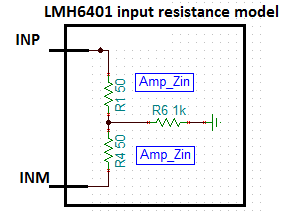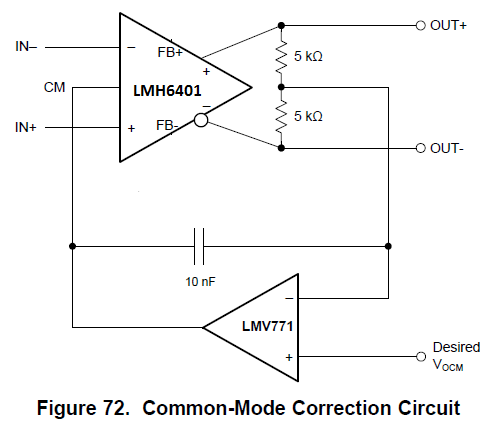Other Parts Discussed in Thread: DAC39J84, TINA-TI
To whom it may concern,
I would like to use LMH6401 to buffer the signal from a PMOS current steering DAC (TI DAC39J84).
I must use DC coupling in my application.
Now here is the problem: let's assume DAC's output common mode should naturally be biased at common-mode of 0.5V. I want to directly feed this 0.5V common-mode signal into LMH6401.
This will hurt linearity a bit for sure, but let's ignore that.
I want to use +-2.5V supply on LMH6401 and bias output common mode of LMH6401 at 0V.
This means that I just need to leave VOCM pin open.
However, in TINA-TI simulator, I found this result after DC simulation:
Could you kindly explain why?
Also, I want to ask about the input impedance of the amplifier.
Is the input impedance 50-ohm to gnd each side, or floating 100ohm differentially?
I look forward to your help!
Thank you.
Weiyu





